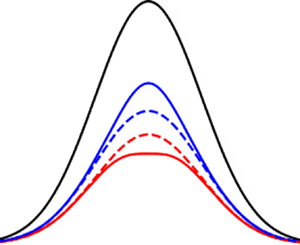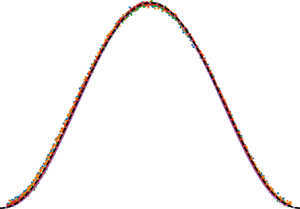doi:10.1017/jfm.2023.308 Martínez-Muriel et al. Fluid-structure resonance in spanwise-flexible flapping wings
JFM Rapids
Vortex imprints on a free surface as proxy for surface divergence
-
- Published online by Cambridge University Press:
- 02 June 2023, R2
-
- Article
-
- You have access
- Open access
- HTML
- Export citation
On the streamwise vorticity generation and distribution in an angular particle wake
-
- Published online by Cambridge University Press:
- 07 June 2023, R3
-
- Article
-
- You have access
- Open access
- HTML
- Export citation
Focus on Fluids
Large-scale impacts of small-scale ocean topography
-
- Published online by Cambridge University Press:
- 25 May 2023, F1
-
- Article
-
- You have access
- HTML
- Export citation
JFM Papers
Study of CO2 desublimation during cryogenic carbon capture using the lattice Boltzmann method
-
- Published online by Cambridge University Press:
- 23 May 2023, A1
-
- Article
-
- You have access
- Open access
- HTML
- Export citation
Steady and unsteady coupling in twin weakly underexpanded round jets
-
- Published online by Cambridge University Press:
- 23 May 2023, A2
-
- Article
-
- You have access
- Open access
- HTML
- Export citation
Heat transfer, vapour diffusion and Stefan flow around levitating droplets near a heated liquid surface
-
- Published online by Cambridge University Press:
- 23 May 2023, A3
-
- Article
-
- You have access
- Open access
- HTML
- Export citation
Nonlinear internal wave reflection and transmission at an interface
-
- Published online by Cambridge University Press:
- 23 May 2023, A4
-
- Article
- Export citation
Fluid–structure resonance in spanwise-flexible flapping wings
-
- Published online by Cambridge University Press:
- 26 May 2023, A5
-
- Article
-
- You have access
- Open access
- HTML
- Export citation
Viscous flow around three-dimensional macroscopic cavities in a granular material: asymptotic theory for two sufficiently distant spherical cavities of arbitrary configuration
-
- Published online by Cambridge University Press:
- 29 May 2023, A6
-
- Article
- Export citation
Growth of a viscoplastic blister underneath an elastic sheet
-
- Published online by Cambridge University Press:
- 25 May 2023, A7
-
- Article
-
- You have access
- Open access
- HTML
- Export citation
Reynolds number dependence of the turbulent/non-turbulent interface in temporally developing turbulent boundary layers
-
- Published online by Cambridge University Press:
- 26 May 2023, A8
-
- Article
- Export citation
Drag model of finite-sized particle in turbulent wall-bound flow over sediment bed
-
- Published online by Cambridge University Press:
- 01 June 2023, A9
-
- Article
-
- You have access
- HTML
- Export citation
On particle fountains in a crossflow
-
- Published online by Cambridge University Press:
- 25 May 2023, A10
-
- Article
-
- You have access
- Open access
- HTML
- Export citation
Effect of plasma actuator-based control on flow-field and acoustics of supersonic rectangular jets
-
- Published online by Cambridge University Press:
- 25 May 2023, A11
-
- Article
-
- You have access
- Open access
- HTML
- Export citation
Analysis of wave converging phenomena inside the shocked two-dimensional cylindrical water column
-
- Published online by Cambridge University Press:
- 30 May 2023, A12
-
- Article
-
- You have access
- HTML
- Export citation
Efficient prediction of turbulent flow quantities using a Bayesian hierarchical multifidelity model
-
- Published online by Cambridge University Press:
- 29 May 2023, A13
-
- Article
-
- You have access
- Open access
- HTML
- Export citation
Body-force modelling in thermal compressible flows with the lattice Boltzmann method
-
- Published online by Cambridge University Press:
- 29 May 2023, A14
-
- Article
-
- You have access
- HTML
- Export citation
Linear-model-based study of the coupling between velocity and temperature fields in compressible turbulent channel flows
-
- Published online by Cambridge University Press:
- 29 May 2023, A15
-
- Article
-
- You have access
- Open access
- HTML
- Export citation
Patterns in transitional shear turbulence. Part 1. Energy transfer and mean-flow interaction
-
- Published online by Cambridge University Press:
- 30 May 2023, A16
-
- Article
-
- You have access
- Open access
- HTML
- Export citation
Patterns in transitional shear turbulence. Part 2. Emergence and optimal wavelength
- Part of:
-
- Published online by Cambridge University Press:
- 30 May 2023, A17
-
- Article
-
- You have access
- Open access
- HTML
- Export citation









































































































